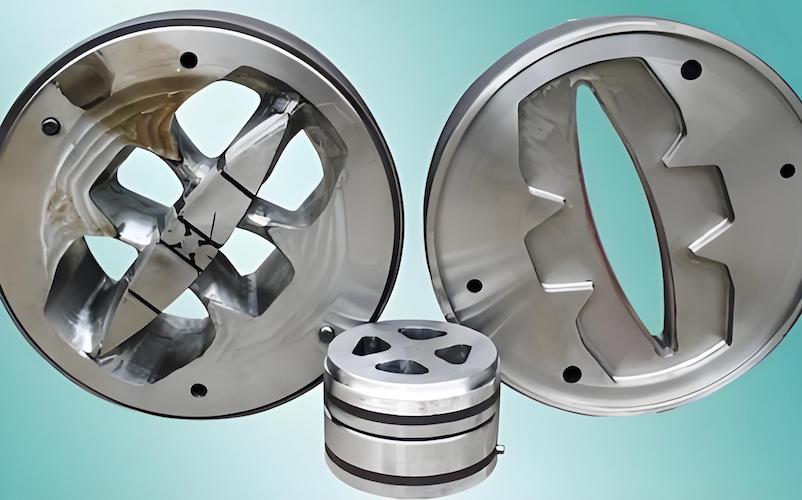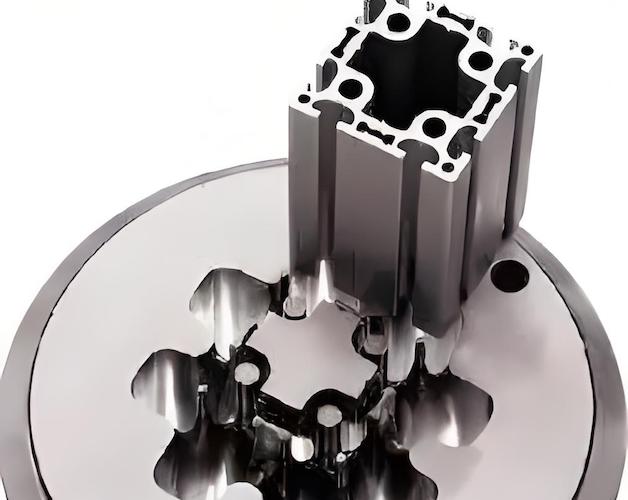Content Menu
● 1. Concave or Convex Bowing Surfaces on Aluminum Alloy Profile Walls
>> 1.1 Causes of Concave Bowing Surfaces
>>> Remedy
>> 1.2 Causes of Bulging Hollow Aluminum Alloy Profile Walls
>>> Correction Method
● 2. Seams or Poor Welding
>> 2.1 Causes of Gaps
>>> Correction Methods
● 3. Surface Streaks on Aluminum Alloy Profiles
>> 3.1 Causes of Surface Streaks
>>> Correction Methods
● 4. Bent and Twisted Aluminum Alloy Profiles
>> 4.1 Causes of Bending and Twisting
>>> Remedy
● Conclusion
● Frequently Asked and Questions regarding Aluminum Extrusion Die Repair
>> 1.How to choose the material for aluminum extrusion dies?
>> 2.How is the die temperature controlled during the aluminum extrusion process?
>> 3.What are common failures of aluminum extrusion dies?
>> 4.How to prevent wear of aluminum extrusion dies?
>> 5.What are the latest technologies for aluminum extrusion die repair?
Aluminum extrusion dies are critical components in the manufacturing process of aluminum profiles, ensuring that the final products meet specific shape, size, and precision requirements. However, during production, various issues can arise that affect the quality of the extruded profiles. This article explores common problems encountered with aluminum extrusion dies, particularly when extruding hollow aluminum profiles, and provides detailed repair methods to address these issues.
1. Concave or Convex Bowing Surfaces on Aluminum Alloy Profile Walls
1.1 Causes of Concave Bowing Surfaces
Concave bowing surfaces on hollow aluminum alloy profile walls can occur due to several factors. One primary cause is the misalignment of the core working zone relative to the lower die hole working zone. When the core working zone is lower than the lower die hole, it results in an insufficiently long effective length of the core working zone, leading to concave surfaces. This misalignment can stem from improper installation or wear over time, which can alter the die's geometry and affect the extrusion process.
Remedy
To correct this issue, a spacer ring can be placed between the core and the lower die. This adjustment ensures that the core working zone is at the same height as the lower die hole sizing zone under load. Additionally, it is essential to reduce the lower die outlet by the same thickness of the spacer ring to maintain the overall die geometry. Regular inspections and adjustments can help prevent this issue from recurring, ensuring consistent product quality.
1.2 Causes of Bulging Hollow Aluminum Alloy Profile Walls
Bulging in hollow aluminum alloy profile walls is often a result of extended die life, which can lead to severe wear in the core working zone. This wear creates grooves that increase friction, slowing down the metal flow and causing bulging. The problem can be exacerbated by variations in the material properties of the aluminum alloy being extruded, which can affect how the metal behaves under pressure.
Correction Method
If the profile wall thickness tolerance allows, the surface of the die core's working band can be filed or polished to reduce friction. In cases where the die core's working band is severely worn and the profile wall thickness has reached the upper tolerance limit, the die should be preheated to approximately 300°C. After preheating, the die core can be re-welded, filed to the required dimensions, and polished before use. If the die core's working band is not worn, it is advisable to file down any outer obstructions and inner retention areas to facilitate smoother metal flow. Implementing a regular maintenance schedule can help identify wear early and extend the life of the die.
2. Seams or Poor Welding
Hollow aluminum alloy profiles are typically extruded using a flat diverter die, which necessitates the diversion and welding of metal. If the welding process is not executed correctly, gaps can form, leading to defects in the final product. These defects can compromise the structural integrity of the profiles and lead to increased rejection rates during quality control inspections.
2.1 Causes of Gaps
There are two primary reasons for the formation of gaps in welded areas. First, if the diverter hole and welding chamber are too narrow, it can result in insufficient metal flow. This lack of flow leads to inadequate hydrostatic pressure in the welding chamber, causing the product to exit the die hole before proper welding occurs. Second, improper lubrication—either excessive or inadequate—can also contribute to poor welding quality. Understanding the flow dynamics of the metal during the extrusion process is crucial for preventing these issues.
Correction Methods
To address the first issue, grinding or milling can be employed to expand the diverter holes and the welding chamber area. This expansion increases metal flow and allows for sufficient hydrostatic pressure to form within the welding chamber. For the lubrication issue, switching to a non-lubricated extrusion process may improve welding quality. Additionally, training operators on the importance of maintaining proper lubrication levels can help prevent future occurrences of poor welding.

3. Surface Streaks on Aluminum Alloy Profiles
Surface streaks are a common defect observed on the outer surface of extruded profiles, particularly noticeable after anodizing. These streaks often appear in areas with significant wall thickness differences, welded metal areas under the diverter bridge, and on the backside of areas with "branching" and threaded holes. The presence of these streaks can detract from the aesthetic appeal of the final product and may lead to customer dissatisfaction.
3.1 Causes of Surface Streaks
Insufficient or Excessive Metal Flow: Streaks can occur in the "branching" and threaded holes due to improper metal flow, which can be influenced by the die design and the extrusion parameters.
Weld Area Issues: Streaks may also arise in the weld area under the die diverter bridge, where the metal flow dynamics can create inconsistencies.
Profile Cross-Section Design Problems: Large wall thickness differences can lead to streaky color variations after anodizing, highlighting the importance of careful design.
Insufficient Cooling Capacity: Inadequate cooling can result in black streaks post-anodizing, emphasizing the need for effective cooling systems.
Poor Quality of Ingot: The quality of the ingot itself can affect the appearance of streaks after anodizing, making material selection a critical factor.
Correction Methods
Review Customer Drawings: Check for defects in the profile's decorative surface, such as large thickness differences, branches, and threaded holes. Engaging with customers to understand their requirements can help in designing better profiles.
Optimize Diverter Bridge Design: The diverter bridge should be positioned on the non-decorative surface of the profile. While ensuring mold strength, the welding chamber should be as large as possible to allow sufficient hydrostatic pressure.
Install Upper Welding Chamber: For large-diameter pipes or large-size hollow profile molds, consider installing an upper welding chamber on the male mold to enhance the welding process.
Repair Internal Streaks: For "branches" or streaks on the inside of the profile at threaded holes, repair can be achieved by polishing the die working zone, grinding it smooth, or modifying the transition radius of these areas.
Control Billet Material Quality: Ensure uniform heating temperature and thorough homogenization annealing to prevent streaks caused by the billet material. This step is crucial for maintaining consistent material properties.
Adjust Cooling System: After the extruded material exits the die, the grain size is influenced by the temperature entering the quenching zone and the cooling rate. Operators should promptly adjust the cooling system's air and water pressures to avoid excessively low cooling temperatures or uneven cooling rates, which can lead to noticeable color differences after anodizing.
4. Bent and Twisted Aluminum Alloy Profiles
Bent and twisted profiles can significantly affect the quality and usability of the extruded products. This issue often arises from improper die alignment or design flaws, which can lead to increased production costs and waste.
4.1 Causes of Bending and Twisting
Misalignment of Die Components: Improper alignment of the die core and the lower die opening can lead to uneven metal flow across the profile, resulting in distortion.
Asymmetrical Manifold Holes: If the manifold holes in symmetrical hollow profile molds are not sized or positioned correctly, it can result in uneven metal flow, exacerbating the bending and twisting issues.
Irregular Machining: Irregular machining of the manifold holes or obstructions on the die core can hinder metal flow, leading to bending and twisting. Regular maintenance and calibration of the machining equipment can help mitigate these issues.
Remedy
Polish Die Core and Manifold Outlets: Use appropriate methods to polish the die core or manifold outlets. If necessary, enlarge the manifold holes to achieve balanced material flow. This step is crucial for ensuring uniform extrusion and minimizing defects.
Remove Obstructions: Grind away any obstructions that may be hindering metal flow. Implementing a routine inspection process can help identify and address these issues before they impact production.

Conclusion
Repairing aluminum extrusion dies is essential for maintaining the quality and efficiency of the extrusion process. By understanding the common issues that arise during production and implementing the appropriate corrective measures, manufacturers can ensure that their aluminum profiles meet the required specifications. Regular maintenance and timely repairs not only extend the life of the dies but also enhance the overall productivity of the extrusion process. As the demand for aluminum products continues to grow, investing in die repair and maintenance will be crucial for manufacturers aiming to stay competitive in the market.
By following the outlined methods and continuously monitoring the extrusion process, manufacturers can minimize defects, improve product quality, and ultimately achieve greater customer satisfaction. Additionally, fostering a culture of continuous improvement and training within the workforce can lead to innovative solutions and enhanced operational efficiency, further solidifying the manufacturer’s position in the industry.
Frequently Asked and Questions regarding Aluminum Extrusion Die Repair
1.How to choose the material for aluminum extrusion dies?
When selecting aluminum extrusion die materials, consider their wear resistance, thermal conductivity, and strength. Common materials include high-chromium steel and aluminum alloys, which can withstand high temperatures and pressures while exhibiting good processing properties.
2.How is the die temperature controlled during the aluminum extrusion process?
Die temperature control can be achieved through heating or cooling systems. Maintaining the proper die temperature helps reduce metal flow resistance, prevent extrusion defects, and improve product quality.
3.What are common failures of aluminum extrusion dies?
Common failures include die wear, poor welds, surface streaks, bending, and distortion. These problems often affect the quality and precision of the extruded product.
4.How to prevent wear of aluminum extrusion dies?
Regular die maintenance and inspection are key to preventing wear. Using appropriate lubricants, controlling extrusion speed and temperature, and performing regular die repairs can extend die life.
5.What are the latest technologies for aluminum extrusion die repair?
The latest repair technologies include laser welding, 3D printing repair, and surface coating. These technologies can effectively repair worn and damaged molds and improve the performance and service life of the molds.





















